Normalmente Ponemos Imágenes De La Vía Láctea, Estrellas, Meteoros Y La Luna... Pero Luego Nos Preguntamos,
Normalmente ponemos imágenes de la Vía Láctea, estrellas, meteoros y la Luna... pero luego nos preguntamos, ¿Y por que fotos del Sol no? Y que mejor que compartir una de nuestra estrella en uno de los fenómenos que normalizamos pero que no deja de ser maravilloso, una puesta de sol.
Crédito: Juanma Espinosa
https://instagram.com/juanmaespinosa
~Antares

More Posts from Glaretum and Others
Black Holes Dine on Stellar Treats!

See that tiny blob of light, circled in red? Doesn’t look like much, does it? But that blob represents a feast big enough to feed a black hole around 30 million times the mass of our Sun! Scientists call these kinds of stellar meals tidal disruption events, and they’re some of the most dramatic happenings in the cosmos.

Sometimes, an unlucky star strays too close to a black hole. The black hole’s gravity pulls on the star, causing it to stretch in one direction and squeeze in another. Then the star pulls apart into a stream of gas. This is a tidal disruption event. (If you’re worried about this happening to our Sun – don’t. The nearest black hole we know about is over 1,000 light-years away. And black holes aren’t wild space vacuums. They don’t go zipping around sucking up random stars and planets. So we’re pretty safe from tidal disruption events!)

The trailing part of the stream gets flung out of the system. The rest of the gas loops back around the black hole, forming a disk. The material circling in the disk slowly drifts inward toward the black hole’s event horizon, the point at which nothing – not even light – can escape. The black hole consumes the gas and dust in its disk over many years.

Sometimes the black hole only munches on a passing star – we call this a partial tidal disruption event. The star loses some of its gas, but its own gravity pulls it back into shape before it passes the black hole again. Eventually, the black hole will have nibbled away enough material that the star can’t reform and gets destroyed.

We study tidal disruptions, both the full feasts and the partial snacks, using many kinds of telescopes. Usually, these events are spotted by ground-based telescopes like the Zwicky Transient Facility and the All-Sky Automated Survey for Supernovae network.

They alert other ground- and space-based telescopes – like our Neil Gehrels Swift Observatory (illustrated above) and the European Space Agency’s XMM-Newton – to follow up and collect more data using different wavelengths, from visible light to X-rays. Even our planet-hunting Transiting Exoplanet Survey Satellite has observed a few of these destructive wonders!
We’re also studying disruptions using multimessenger astronomy, where scientists use the information carried by light, particles, and space-time ripples to learn more about cosmic objects and occurrences.

But tidal disruptions are super rare. They only happen once every 10,000 to 100,000 years in a galaxy the size of our own Milky Way. Astronomers have only observed a few dozen events so far. By comparison, supernovae – the explosive deaths of stars – happen every 100 years or so in a galaxy like ours.
That’s why scientists make their own tidal disruptions using supercomputers, like the ones shown in the video here. Supercomputers allow researchers to build realistic models of stars. They can also include all of the physical effects they’d experience whipping ‘round a black hole, even those from Einstein’s theory of general relativity. They can alter features like how close the stars get and how massive the black holes are to see how it affects what happens to the stars. These simulations will help astronomers build better pictures of the events they observe in the night sky.
Keep up with what’s happening in the universe and how we study it by following NASA Universe on Twitter and Facebook.
Make sure to follow us on Tumblr for your regular dose of space!
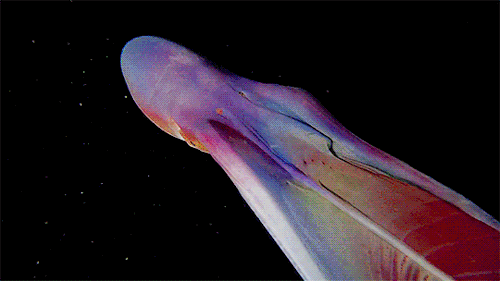
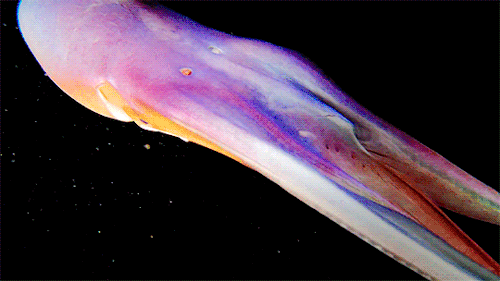
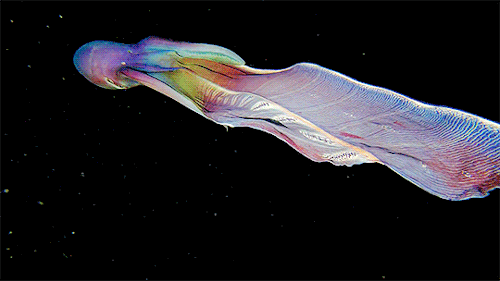
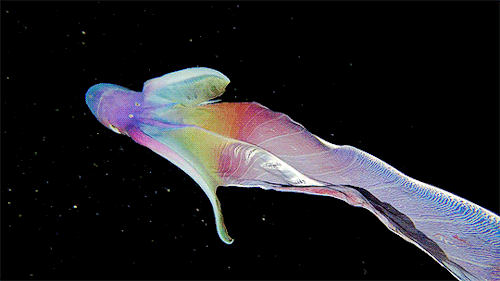
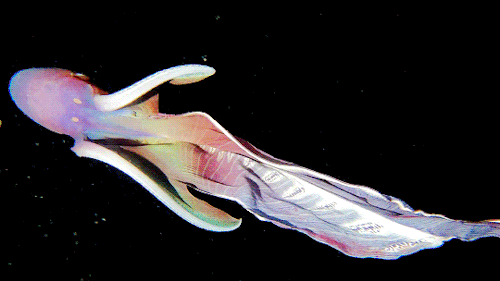
A close up of the Blanket Octopus during a blackwater dive with The Three P diving club , Romblon Island, Philippines. Credit: Joseph Elayani
Más fotografías que se pudieron captar en nuestra aventura por el Desierto Wirikuta.
Crédito: Pavel Vorobiev
https://instagram.com/_vorobservatorio_
~Antares

We Just Found Water on the Moon’s Sunlit Surface

When the first Apollo astronauts returned from the Moon in 1969, the Moon’s surface was thought to be completely dry. Over the last 20 years, orbital and impactor missions confirmed water ice is present inside dark, permanently shadowed craters around the poles. But could water survive in the Moon’s sunnier regions? Using SOFIA, the world’s largest flying observatory, we found water on a sunlit lunar surface for the first time. The discovery suggests water may be distributed across the Moon’s surface, which is a whopping 14.6 million square miles. Scientists think the water could be stored inside glass beadlike structures within the soil that can be smaller than the tip of a pencil. The amount of water detected is equivalent to about a 12-ounce bottle trapped in a cubic meter volume of soil. While that amount is 100 times less than what’s found in the Sahara Desert, discovering even small amounts raises new questions about how this precious resource is created and persists on the harsh, airless lunar surface. Learn more about the discovery:
Water was found in Clavius Crater, one of the Moon’s largest craters visible from Earth.

The water may be delivered by tiny meteorite impacts…

…or formed by the interaction of energetic particles ejected from the Sun.

Follow-up observations by SOFIA will look for water in additional sunlit locations on the Moon.

We are eager to learn all we can about the presence of water in advance of sending the first woman and next man to the lunar surface in 2024 under our Artemis program. What we learn on and around the Moon will help us take the next giant leap – sending astronauts to Mars.
Make sure to follow us on Tumblr for your regular dose of space: http://nasa.tumblr.com
A veces solo es necesario alejarse de la ciudad, tomar aire fresco y apreciar las estrellas.
Crédito: Tero Marin
https://instagram.com/teromarin
~Antares

Esta fotografía fue tomada desde la nave espacial Apollo 8 con una lente de longitud focal larga, mirando hacia el sur hacia el gran cráter Goclenius, que está en primer plano.
Crédito: NASA / JSC

Vía Láctea sobre Estación Wadley, San Luis Potosí. En la imagen podemos ver una casa de adobe.
Crédito: Pavel Vorobiev
https://instagram.com/_vorobservatorio_
~Antares

-
 gatosazules1 reblogged this · 2 years ago
gatosazules1 reblogged this · 2 years ago -
 gatosazules1 liked this · 2 years ago
gatosazules1 liked this · 2 years ago -
 andrea-arcangel liked this · 3 years ago
andrea-arcangel liked this · 3 years ago -
 glaretum reblogged this · 3 years ago
glaretum reblogged this · 3 years ago

Glaretum fundado en el 2015 con el objetivo de divulgar la ciencia a través de la Astronomía hasta convertirnos en una fuente de conocimiento científico veraz siendo garantía de información seria y actualizada.
248 posts


